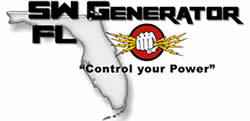 Recommended Generator Maintenance
Recommended Generator Maintenance
Have you ever wondered what it takes to keep a whole house generator running smoothly and reliably? As an essential backup power source, a whole house generator requires regular maintenance to ensure it will be ready to provide electricity during unexpected power outages. In this blog post, we will explore the typical maintenance tasks needed for a whole house generator.
1. Regular Generator Inspection:
Performing routine visual inspections is the first step in maintaining your whole house generator. Check for any signs of damage, leaks, or loose connections in and around the generator unit. Inspect the battery for corrosion and ensure it is securely connected. Look for any debris or vegetation that may have accumulated around the generator, as it can obstruct airflow and cause overheating.
2. Oil Change:
Similar to a car engine, a whole house generator’s engine requires regular oil changes to ensure smooth operation and longevity. Follow the manufacturer’s recommendations on how often to change the oil – typically every 100-200 hours of usage or annually if unused. Always use high-quality oil recommended by the manufacturer for optimal performance.
3. Air Filter Replacement:
The air filter prevents dirt, dust, and other particulates from entering the engine intake system and causing damage. Over time, air filters become clogged with debris hindering airflow efficiency which can reduce performance or even cause engine problems. Depending on usage conditions, it is recommended to replace or clean your air filter every 100-150 hours of runtime.
4. Spark Plug Replacement:
Spark plugs are crucial components in generating combustion within an engine’s cylinder chamber by creating sparks that ignite fuel-air mixture during startup periods or when loads fluctuate significantly. Replacing spark plugs after every 200-300 hours of usage ensures they are in optimal condition – providing consistent ignition throughout its lifespan.
5. Battery Maintenance:
A reliable battery ensures that your whole house generator starts up promptly when needed during emergencies without any hiccups. It’s essential to monitor the battery’s charge level regularly and keep it at an adequate state. Consult the manufacturer’s manual for specific guidance on maintenance, as some generators may require periodic trickle charging or replacement every few years.
6. Load Testing:
Periodically subjecting your whole house generator to a load test helps simulate real-life scenarios and ensures it can handle the expected electrical demand during a power outage. Load testing is usually done every 12-18 months or whenever significant changes are made to your electrical system. It verifies that the generator starts up smoothly, reaches voltage stability promptly, and supplies electricity consistently.
7. Professional Servicing:
While most maintenance tasks can be performed by homeowners with sufficient knowledge and caution, it is always wise to schedule professional servicing annually or bi-annually according to manufacturer recommendations. Trained technicians can carry out more complex inspections, perform detailed diagnostics, and resolve potential problems that may go unnoticed during routine checks.
Remember, proper maintenance is crucial for ensuring your whole house generator operates reliably when needed most – during power outages. By following these typical maintenance practices diligently and adhering to the manufacturer’s guidelines, you can rest assured knowing your backup power source is always prepared to keep your home running smoothly even in challenging times.

